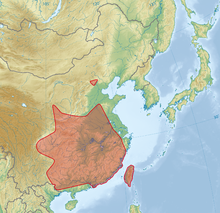
The serotine bat, also known as the common serotine bat, big brown bat, or silky bat, is a fairly large Eurasian bat with quite large ears. It has a wingspan of around 37 cm (15 in) and often hunts in woodland. It sometimes roosts in buildings, hanging upside down, in small groups or individually. The name serotine is derived from the Latin serotinus, which means 'evening', while the generic name derives from Greek ἔπιεν and οίκος, which means 'house flyer'.

The greater noctule bat is a rare carnivorous bat found in Europe, West Asia, and North Africa. It is the largest and least studied bat in Europe with a wingspan of up to 46 centimetres (18 in) and is one of the few bat species to feed on passerine birds. Greater noctule bats are the only bat species to hunt birds on the wing rather than when roosting. The greater noctule bat has wings adapted for open-air hunting and uses echolocation frequencies above the hearing range of birds.

The birdlike noctule is a species of bat. It nests in the holes in old trees and buildings, and sometimes in mineshafts. It is distributed across Northeast Asia, from northeast China and Siberia through the Korean Peninsula to Japan.

The lesser noctule, Leisler's bat or the Irish bat, is a species of insectivorous bat belonging to the vesper bat family, Vespertilionidae. The species was named to honour the naturalist Johann Philipp Achilles Leisler.

The Azores noctule is a species of bat found in the dry forests of the Azores. It is the only species of mammal endemic to the Azores. It has been recorded on most of the islands of the Azores, and remains common on some but is rare on others. Its numbers are threatened due to habitat loss caused by humans, and the remaining populations are quite fragmented. It is known to roost in hollowed-out trees, buildings, and caves.
The mountain noctule is a species of bat found in Afghanistan, India, Pakistan, and Nepal.

The common noctule is a species of insectivorous bat common throughout Europe, Asia, and North Africa.

Rüppell's bat, also known as Rüppell's pipistrelle, is a species of vesper bat found in Africa and Asian republics such as Iraq and Israel. It is the only member of the genus Vansonia. It is found in dry and moist savanna, subtropical or tropical dry shrubland, and hot deserts.

The Vespertilioninae are a subfamily of vesper bats from the family Vespertilionidae.

Nyctalus is a genus of vespertilionid bats commonly known as the noctule bats. They are distributed in the temperate and subtropical areas of Europe, Asia and North Africa.
The Japanese noctule is a species of bat belonging to the family Vespertilionidae. It is endemic to Japan.

Pipistrellini is a tribe of bats in the family Vespertilionidae. It contains several genera found throughout the Old World and Australasia, including the pipistrelles, noctules and related species.












